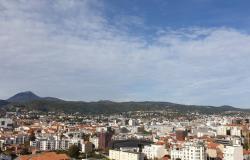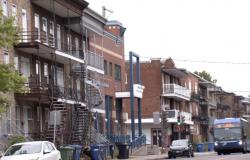Sponsored content
In the context of global warming, Montreal, like all major cities in the world, faces considerable challenges. These require mobilizing all of its resources in the search and implementation of solutions. It is in this spirit that the City will soon present its draft Urban Planning and Mobility Plan 2050 (PUM). This master document will define the new rules for the development of the Montreal of tomorrow and will guide the response of all stakeholders to current and future challenges. The 2050 deadline may seem far away. But given the scale of the work to be accomplished, it’s practically tomorrow.
Moreover, the 2050 horizon is already well anchored in the present thanks to citizen participation in numerous reflection projects. As set out in its City projectthe document illustrating the vision proposed for its PUM 2050, the City’s intentions are clear, starting with achieving carbon neutrality in 2050. This objective is based on the necessary ecological transition which, in turn, is based on an economic and social model respecting the limits of ecosystems and making it possible to reduce GHG emissions.
Biodiversity, a wealth to be protected
In this regard, the City intends in particular to slow down the disappearance of natural environments, which contribute to the ecological wealth and diversity of its territory. Remember that the acquisition of land by the City is the preferred means of protecting natural environments and expanding large parks. Moreover, between 2004 and 2019, it invested $156 million, in accordance with its agglomeration skills, in order to acquire nearly 503 hectares of natural environments, the equivalent of 718 soccer fields.
For example, the Grand Parc de l’Ouest project, a grouping of different sectors of interest and five nature parks in the West Island — those of Anse-à-l ‘Orme, Bois-de-L’Île-Bizard, Cap–Saint-Jacques, Rapides-du-Cheval-Blanc and the Bois-de-la-Roche agricultural park — will have the potential to protect some 3,000 hectares of natural environments and thus become the largest municipal park in Canada upon its inauguration, scheduled for 2030.
Develop inclusive and resilient neighborhoods
In addition to a stated bias for the protection of the island’s natural heritage, the PUM project also responds to issues linked to social, gender, territorial and environmental inequalities with numerous initiatives, first in key sectors then throughout the territory. Under the Inclusive and Resilient Neighborhoods (QIR) approach, adopted last October, living environments that combine several vulnerabilities, notably the presence of heat islands, limited access to green spaces as well as parks and sports and leisure infrastructures, will be prioritized in terms of development and improvement of the quality of life.
Already, phase I of the initiative targets three neighborhoods, namely that of Saint-Pierre in the Lachine borough, that of Sainte-Marie in the Ville-Marie borough and that of the northeast of the Montréal- North. These priority neighborhoods were able to be identified using the living environment equity index developed by the City. This is a scale for evaluating the level of quality of life, by neighborhood, which will, in a way, allow for a leveling up of the sectors where the needs are most pressing. An interactive online map also offers an overview of the level of vulnerability and priority by district.
More generally, the draft 2050 Urban Planning and Mobility Plan integrates all the principles of the QIR approach, thus demonstrating a holistic vision of the territory where all the elements that constitute the urban ecosystem are interdependent. To put it another way, the actions to be carried out as part of the ecological transition must in no way contribute to exacerbating social and territorial inequalities or to producing more of them. This is why the City wishes to redevelop the territory and develop mobility from a perspective that is both ecological and inclusive. Ultimately, the capacity for resilience sought in the face of future challenges necessarily requires an equitable distribution of infrastructure and services.
Increase the number of sponge streets and parks
Climate change means extreme weather phenomena. Montreal is not immune to climatic hazards, such as increasing average temperatures, heavy rains, more intense and longer heatwaves, destructive storms (wind, hail, snow and freezing rain), not to mention episodes of smog caused by to forest fires. These phenomena, which risk being exacerbated in the years to come, not only affect populations, but will continue to put infrastructure to the test.
Efforts invested in adapting the territory to climate change have produced encouraging results elsewhere in the world. For example, increasing canopy cover and developing green infrastructure have been shown to provide better protection against extreme weather events. Ahead of the implementation of the PUM, Montreal has already developed seven sponge parks since 2022 and plans to add around thirty over the next two years, the largest of which will be developed in the Verdun district. These green spaces have the merit of preserving their recreational character while contributing to water retention. They absorb it and redirect it during periods of heavy rain, thus reducing pressure on the sewer system.
Added to these surface improvements are 800 sponge sidewalks currently in service and which will increase to 1,200 in the coming years. All of these green infrastructures will cover 8,500 m2 and will be able to retain the water equivalent of three Olympic swimming pools, avoiding the high costs and inconvenience of underground works.
These are just some of the major areas of intervention planned in the City of Montreal’s 2050 Urban Planning and Mobility Plan. This project, as audacious as it is essential to face the challenges that all the world’s metropolises will have to face, cannot do without the support and commitment of all Montrealers. They will also be called upon to express their opinions and validate the proposals that the City will soon submit to them.
> Explore the PUM 2050
This content was produced by the Special Publications team at Duty in collaboration with the advertiser. The editorial team of Duty had no role in the production of this content.
To find out more about the City of Montreal






